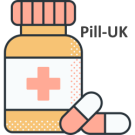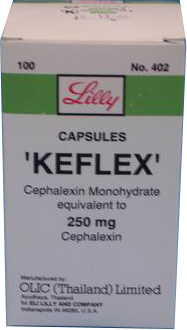Otitis, cystitis, lymphangitis – what do these infections have in common? The answer is simple: Keflex is a medicine that can help you fight them and much more. We tell you which other diseases are sensitive to this drug and who should take it, what side effects it can cause and where in United Kingdom you can buy it without a prescription in this material. You can order this medicine without a prescription and at a very affordable price from our online pharmacy. The postal services will deliver your order directly to your home, anywhere in the country, in the shortest possible time.
What is Keflex
Keflex is a cephalosporin antibiotic that will protect you from infections caused by bacteria, including infections of the upper respiratory tract, nasopharynx, skin, urinary tract and bones. An antibiogram is recommended before starting treatment.
Indications For Keflex
This medicine is indicated for mild to moderate infections caused by organisms sensitive to cephalexin:
- infections of the oral cavity, nasopharynx and respiratory tract (otitis media, pharyngitis, sore throat, sinusitis, pneumonia, bronchitis, bronchopneumonia, pleural empyema, lung abscess);
- Infections of the urogenital system (pyelonephritis, cystitis, urethritis, prostatitis, epididymitis, endometritis, gonorrhoea, vulvovaginitis);
- Skin and soft tissue infections (furunculosis, abscesses, phlegmon, pyoderma, lymphadenitis, lymphangitis, inflammation of the middle ear).
Contraindications to the use of Keflex
Keflex has several contraindications, including hypersensitivity to cephalexin or any other component of the medicinal product. The medicinal product should not be taken during pregnancy and lactation unless absolutely necessary, when the benefit to the mother outweighs the potential harm to the foetus/infant.
In any case, a specialist should be consulted before starting treatment. To determine the appropriate treatment regimen, you should inform your doctor of any medical conditions, allergies and medications you are taking.
Side effects
In general, the drug is fairly well tolerated by patients. However, in some cases adverse reactions have been reported: abdominal pain, nausea, vomiting, dyspepsia, diarrhoea, jaundice, dizziness, weakness, headache, genital and anal itching, vaginitis, genital candidiasis, arthritis, reversible interstitial nephritis, neutropenia, thrombocytopenia, increased liver transaminase activity, pseudomembranous colitis, allergic reactions (rash, urticaria, Quincke’s oedema, erythema, anaphylaxis).
Dosage and Administration
For optimal effect, take this antibiotic at regular intervals, usually every 6 hours. To make sure you don’t forget, take it every day at the same time.
The tablets should be taken orally with plenty of water, regardless of meals.
Always consult your doctor before starting treatment, as a different dose and duration of treatment may be necessary. Inadequate duration of treatment may lead to recurrence of infection.
The recommended daily dose is 1-4 g in several doses (usually 250 mg every 6 hours).
In streptococcal pharyngitis, skin infections and uncomplicated cystitis for patients over 15 years of age – 500 mg every 12 hours for 7-24 days.
For infections caused by beta-hemolytic streptococcus – 10 days.
In children (over 1 year) 25-50 mg/kg/day in several doses: in streptococcal pharyngitis, mild uncomplicated urinary tract infections, skin infections – in 2 doses; in severe infections, the dose may be doubled.


